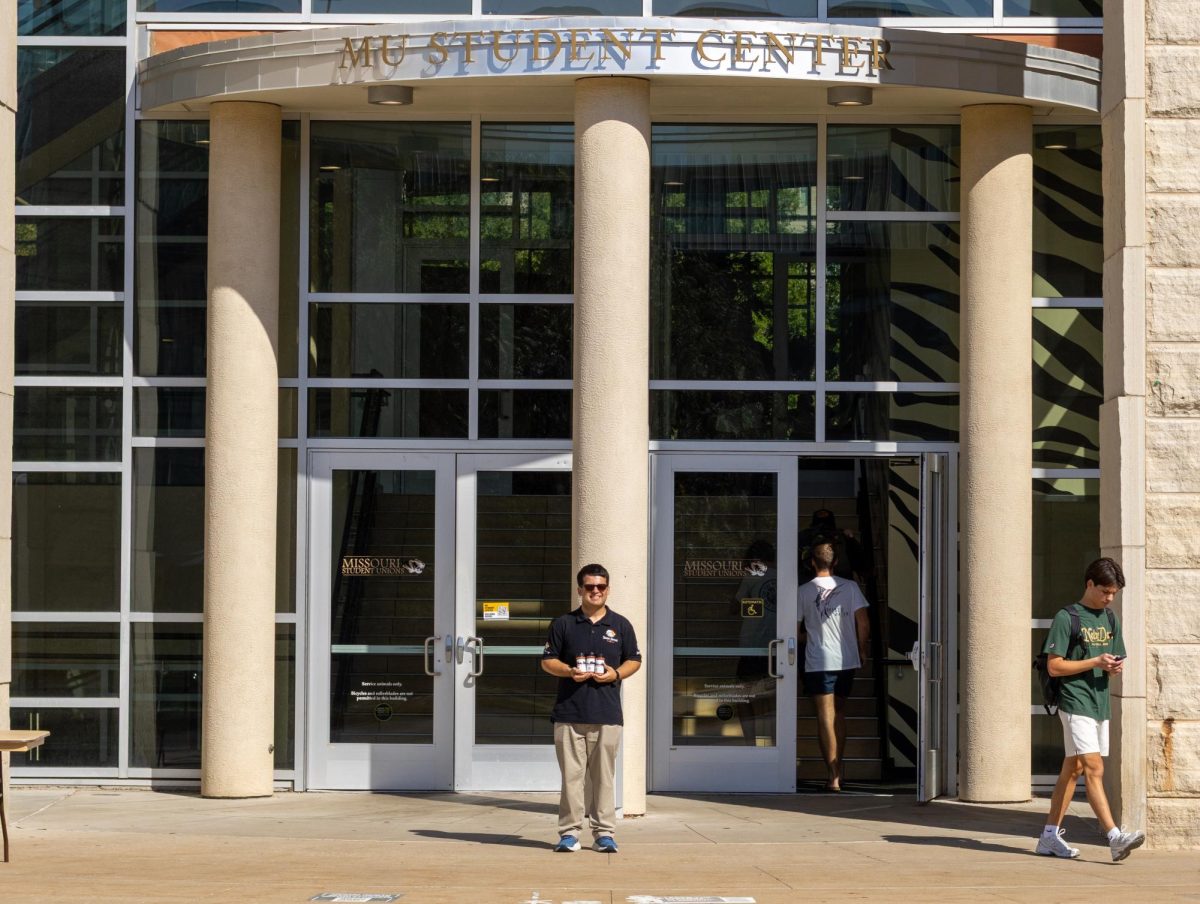Researchers and professors from UM System schools attended the 2013 Missouri Technology Expo on Sept. 19, where they pitched their inventions and research breakthroughs to potential investors.
The expo opened its doors to researchers, venture capitalists and entrepreneurs, who mingled over a continental breakfast served in the Life Sciences Center atrium.
Presentations were held throughout the day in Monsanto Auditorium in the center.
Chris Fender, director of the Office of Technology Management and Industry Relations, and Provost Brian Foster opened by welcoming all visitors to the fourth annual Missouri Tech Expo.
Han Chen, managing director of Kapyon Ventures, LLC., took the stage for a keynote presentation, in which he addressed what it takes to raise venture capital for research projects and inventions.
“Good science that could have become good products, and even greater companies, often do not reach their full potential because the science could never be translated (to investors),” Chen said. “In my experience, science will only get you 30 percent of the way there.”
Chen’s keynote speech was followed by Tiger Cage Elevator Pitches, in which each researcher was given 10-15 minutes to present projects and inventions that have not yet been developed.
Brady Gall, an electrical and computer engineering graduate student, presented an invention he called the Piezoelectric X-ray.
In its early development stages, this small, handheld device will be able to take X-ray images without relying on bulky machinery. The device will cost $1,000 per unit to manufacture and will sacrifice processing speed for a lower cost and convenient size.
Gall said the product garnered attention from companies and government agencies for its potential application in industrial quality assurance, mobile medical imaging in medical emergencies, combat situations and homeland security.
“The FBI contacted us to see our technology and compare it to the current X-ray source they use for explosive ordnance disposal,” Gall said. “Their current X-ray source can be very bulky and cumbersome in those high-stress situations. They saw how much smaller our device was in comparison and were very eager to have the technology.”
Professor Donald Spiers presented [ThermalAid](https://www.themaneater.com/stories/2013/9/11/cafnr-researchers-develop-thermalaid-app/), an app developed by the College of Agriculture, Food and Natural Resources to help determine livestock heat stress levels.
The app can help producers measure the stress level of livestock based on temperature and humidity measurements. The ability of the app to measure current temperature and humidity levels is a unique feature that sets it apart from competing apps, which require a manual input of data, Spiers said.
The app developers at CAFNR are seeking investors that will finance the app’s future plans.
“We hope to develop a cost-effective temperature and humidity sensor independent of weather station data, sensors for that go into the animals and alert the producer when stress levels reach a critical point and expand the scope of the app for other animals like dogs,” Spiers said. “We are also thinking about pursuing a National Science Foundation grant.”
The first round of elevator pitches came to a conclusion as the attendees gathered back in the atrium for lunch.
Chancellor Brady Deaton spoke over lunch, applauding the Office of Technology Management and Industry Relations and its work in coordinating the expo. He also congratulated presenters for their inventions and accomplishments.
Deaton later commented about the expo’s benefits.
“It calls attention to some of the cutting-edge ideas that our students and faculty are working with and connects them to entrepreneurs and investors to create jobs and highlight the role of a research university,” Deaton said.
Fender stated that the expo had a record number of nearly 200 attendees at the event.
Chen also commented on the expo’s success.
“I was surprised about their record turnout,” Chen said. “There were many great projects showcased here that interested me.”
Later Tiger Cage pitches included the production of synthetic diamonds for industrial applications and transfection, the transfer of DNA and RNA into cells.
The event came to a conclusion with a student elevator pitch competition coordinated by the Collaboration, Leadership, Innovation for Missouri Business organization.
The top three pitch presenters won cash prizes to spend toward their business ideas.
Midwest Air Taxi, an air transportation service for Missouri customers, won the third place prize of $500. Dual Cases — slim, durable and customizable iPhone cases targeting college students — won the second place prize of $750.
The grand prize of $1,000 was awarded to The Gauntlet Initiative, whose goal is to engineer prosthetics using 3-D printing technology.







